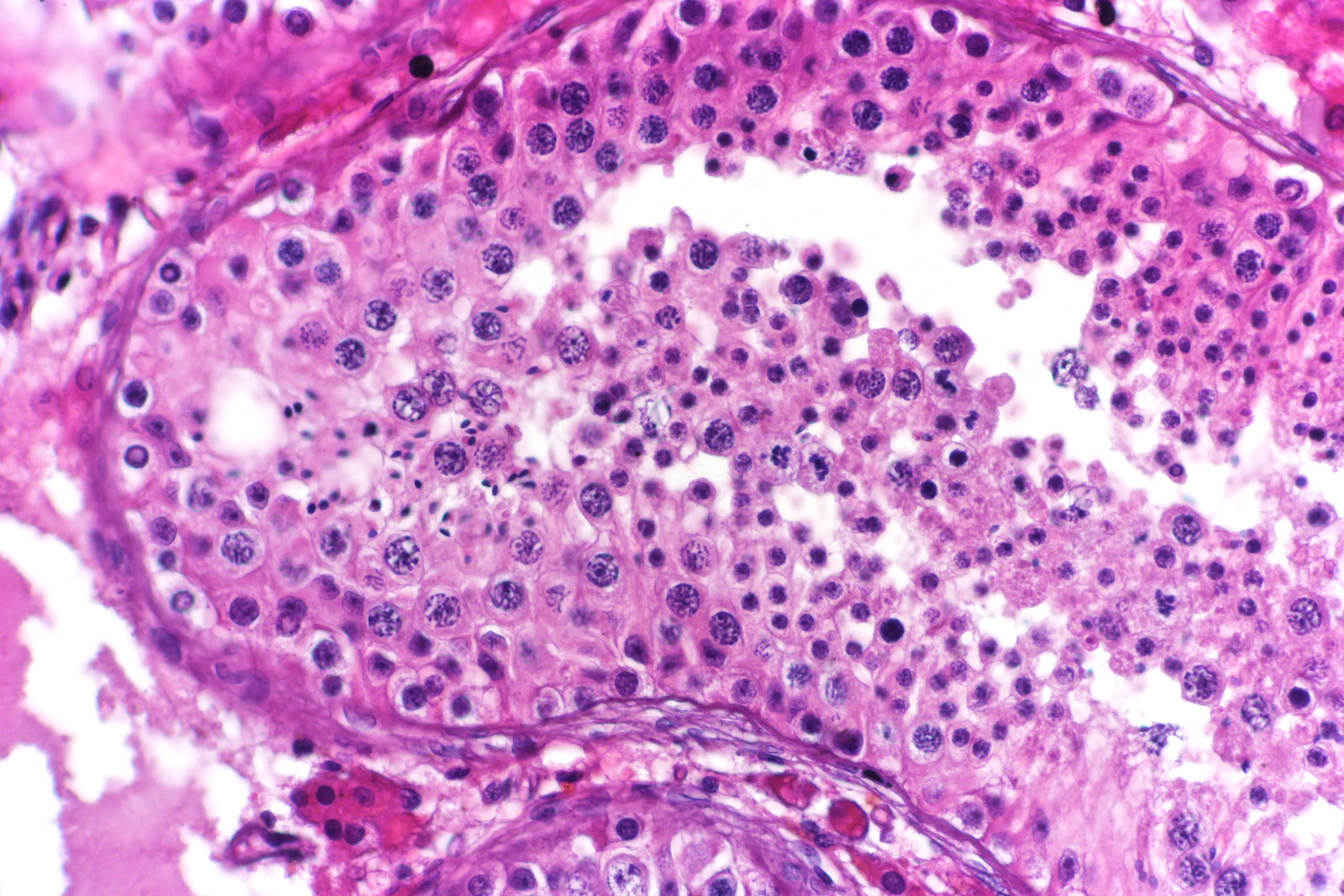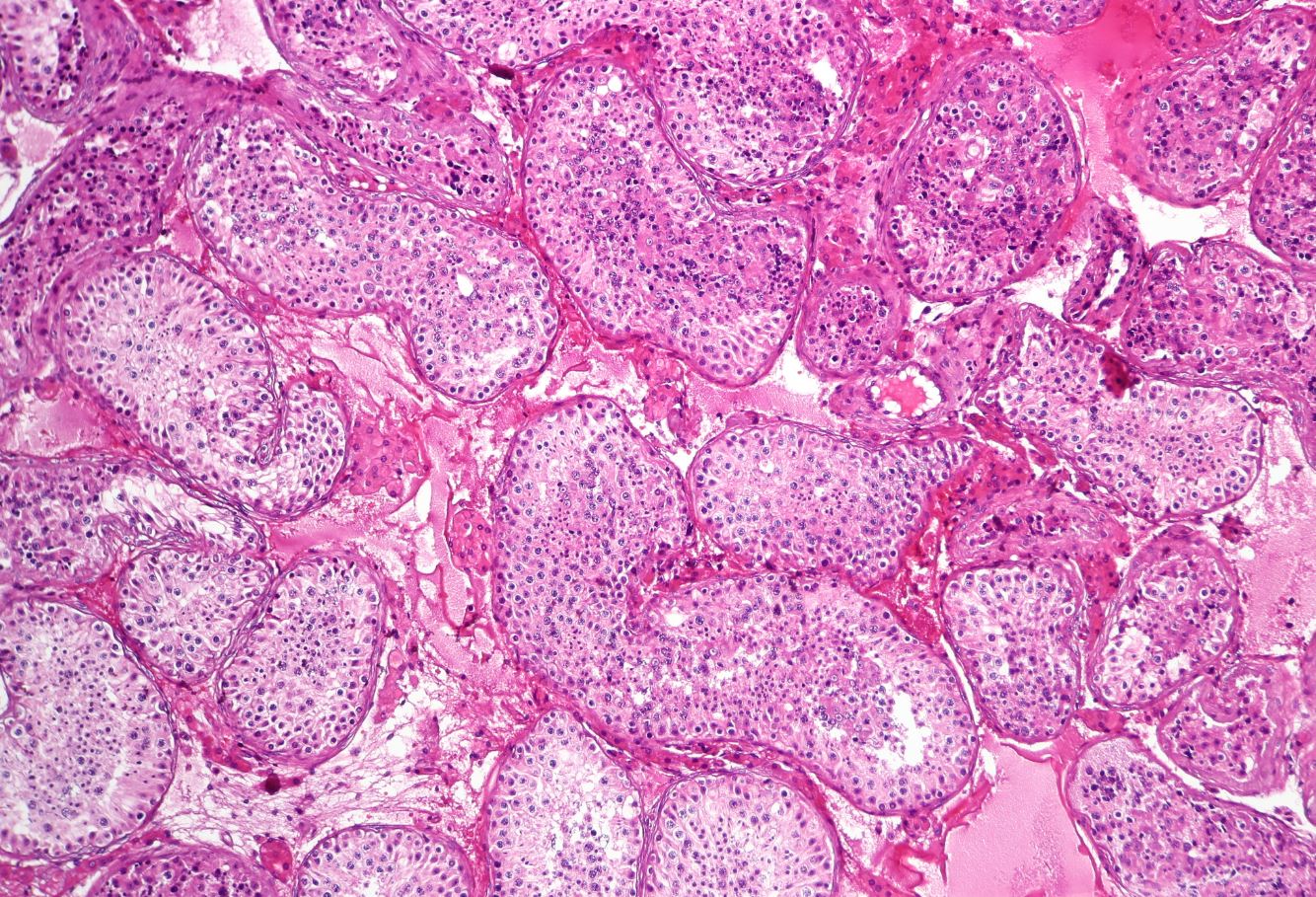Summary
– Spermatogenesis: the formation of spermatozoa
– The duration of spermatogenesis is constant: 74 days.
– Fertilization: a course strewn with obstacles
– Sterility: the disorders of spermatogenesis
Human fertility is achieved through the manufacture of gametes:
– spermatozoa in men: this is spermatogenesis,
– ova in women: this is ovogenesis.
Spermatogenesis: the formation of spermatozoa

Spermatogenesis is the production of spermatozoa in the male seminal fluid. It takes place within the testis, in the seminal tubes’ epithelium, in association with Sertoli cells.
At puberty, the process of cell differentiation from stem cells leads to the production of haploid gametes or spermatozoa.
The spermatozoa released into the lumen of the seminal tubes are immobile; their maturation will only be completed at the end of their transit through the epididymis.
Anatomy of the sperm: head and nucleus, flagellum and cervix
Spermatozoa are elongated cells about 60 microns in size. They can be distinguished under microscopy :
– the flattened head: 4-5 μ m long by 1.5 to 3 µm wide, which contains the capped nucleus of the acrosome,
– the flagellum: separated from the head by the neck and comprising an intermediate piece, the main piece, and a terminal piece,
The structure of the sperm shows that the nucleus occupies most of the head. The acrosome forms an arc around the anterior part of the nucleus and continues through the post-acrosome cape.
Spermatogenesis: three families of cells involved

Three families of germ cells are involved in spermatogenesis:
– spermatogonia,
– spermatocytes,
– spermatids.
They are arranged in superimposed layers between the basal membrane and the lumen of the seminal tube.
Each cell type has its phase in the spermatogenesis process.
The duration of spermatogenesis is constant: 74 days.
The duration of spermatogenesis is about 74 days in men.
50 to 100 million spermatozoa per milliliter of semen
Sperm production is oversized: 50 to 100 million spermatozoa per milliliter of semen are emitted during sexual intercourse
The lifespan of the germ cells is :
– 18 days for spermatogonia,
– 1 day for spermatocytes,
– 23 days for spermatids.
Spermatozoa’s regular production and continuous expulsion through the seminal tubes push them with the testicular fluid into the efferent ducts (epididymis).
Ejaculation: Sperm progression
In the epididymis, the wall’s rhythmic contractions will ensure the progression of spermatozoa, a passage that lasts about ten days.
During ejaculation :
– the spermatozoa mix with the seminal plasma (secretions from the adnexal glands, seminal vesicle, and prostate at ¾),
– they come into contact with prostasomes of prostate origin, which are very rich in cholesterol,
This cholesterol will be included in the spermatozoa’s plasma membrane, which has the function of decreasing its fluidity and the molecular movements in the membrane to block the spermatozoon’s fertilizing abilities until it comes into contact with the oocyte.
Fertilization: a path that is strewn with obstacles
If sperm production is oversized, it is undoubtedly to optimize fertilization of the female egg or oocyte. During sexual intercourse, once the seminal liquid has been ejaculated into the vagina, the sperm must resist the acidity of the vaginal environment:
– the most mobile sperm then reach the uterine cavity,
– The most resistant have 24 hours of survival time to get to the fallopian tube, where they can only meet the ovum if their emission and journey coincide chronologically with ovulation.
When they pass through the fallopian tube, it is admitted that there are only 200 of them (out of the 50 to 100 million): among them, there is only one possible winner.
If it is fertilized, the oocyte then reaches the uterine cavity in 3 days, where gestation begins.
Sterility: spermatogenesis disorders
The adoption of the term “spermatozoid” dates back to 1841. The disorders of spermatogenesis were unknown until the 20th century.
Today, the causes of male infertility, which until then had no recognized existence, have been identified. Infertility is determined by counting the spermogram, carried out for the first time by the American urologist John MacLeod in 1951.
Among the disorders observed :
– Azoospermia: absence or malformation of spermatozoa,
– Oligospermia: spermatozoa present, but in reduced numbers.


